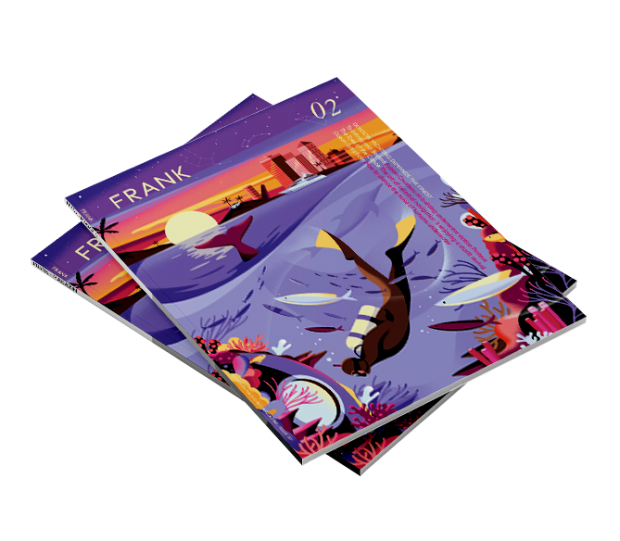- Alaskan Yachts
- Azimut Yachts
- Back Cove Yachts
- Beneteau Yachts
- Benetti Superyachts
- Bertram Yachts
- Boston Whaler
- Broward Yachts
- Buddy Davis Sportfish
- Burger Yachts
- Cabo Yachts
- Catamarans
- Carver Motoryachts
- Center Console
- Chris-Craft Yachts
- Cruisers Yachts
- DeFever Trawlers
- Dufour Sailboats
- Fairline Yachts
- Feadship Yachts
- Ferretti Yachts
- Formula Yachts
- Fountaine Pajot Cats
- Grady-White
- Grand Banks Trawlers
- Hargrave Yachts
- Hatteras Yachts
- Hinckley Picnic Boats
- Horizon Yachts
- Hydra-Sports
- Intrepid Boats
- Jarrett Bay Sportfish
- Jeanneau Yachts
- Kadey-Krogen Trawlers
- Lazzara Yachts
- Lekker Boats
- Luhrs Sportfish
- Marlow Yachts
- Maritimo Yachts
- Marquis Yachts
- McKinna Motoryachts
- Meridian Yachts
- Midnight Express
- MJM Yachts
- Mochi Craft
- Neptunus Motoryachts
- Nordhavn Trawlers
- Nordic Tugs
- Numarine Yachts
- Ocean Alexander Yachts
- Offshore Yachts
- Outer Reef
- Oyster Sailing Yachts
- Pacific Mariner Yachts
- Palmer Johnson Yachts
Volcanic Wine Regions: A Pink Explosion
Volcanic wine regions are shaking up the world of rosé with flavorsome bursts of minerality, a bit of salinity and even a hint of oyster shell.

When you think of rosé wine you might be transported to a sunbaked aft deck in the Mediterranean, sipping on a pale pink from Provence with a dry, crisp and fruity finish. But why not fantasize about meandering around black, volcanic rocks on the Azorean island of Pico where the rosé is just as pink, but the flavors of fruit are dynamically layered.
As rosé consumption all over the world has risen, so has the number of winemaking styles reaching the market. That classic Provençal expression is still wildly popular, of course, but it’s now being joined by a gamut of others, showcasing how versatile and exciting the world of rosé can be. And some of the most delightful varietals are being made in wine countries where volcanic soil often leads to unusual and thrilling flavors, especially when it comes to the pink stuff.
Like any type of wine, rosé hailing from lava lands offers incredible variety; elevation and soil composition differ depending on location and yield grapes that represent the destination. Sicily’s Mount Etna won’t guarantee the same type of wines as Oregon’s wine country just because their farms are both impacted by volcanoes. After all, volcanic terroir can be composed of ash, lava, obsidian and other types of soil. Mount Etna’s wine producing areas, for instance, are treated to the most active volcano in Europe. Located on the eastern edge of the island of Sicily, the volcano has been erupting almost annually since 2001, and thus, the soil there includes a medley of basalt pebbles, pumice and black ash. Most of the vineyards on Mount Etna are terraced high on its northern slopes, creating rosé wines that are aromatic and complex.
Sicily, the Canary Islands, and Pico, roughly 1,000 miles west of Lisbon, are famous for their volcanoes. But there are countless other wine countries that feature volcanic terroir that might not immediately spring to mind. California, for example, has both active and extinct peaks, and its two biggest winemaking regions (Sonoma and Napa) feature fertile volcanic soil. But Lake County, a geothermal hotspot north of Napa, is home to Mount Konocti, which most recently erupted 11,000 years ago. (This is considered young as far as volcanic activity is concerned.) You’ll find obsidian and basalt in the grape-growing farms, which are tucked on rugged, high-elevation plots of mountainous land. The grapes grow so beautifully that a notable number of wineries based in Napa and Sonoma actually source some of their fruit from Lake County.
Many of the designated American Viticultural Areas (or AVAs) in Oregon, including Umpqua Valley in the middle of the state and the now world-famous Willamette Valley to the north, are similarly volcanic (mostly basalt). Those looking at the region’s prized Pinot Noirs should also consider how local winemakers are turning the grapes into expressive, vibrant rosés.
Regardless of where you look to for a sip of volcanic rosé, it is best to keep an open mind. These grapes can often be wild with a good amount of refreshing minerality and acidity; some can even delight with a jolt of saltwater because at the very least, a glass of rosé should always remind you of a summer by the sea. Here is FRANK’s list of some of the best pink wine hailing from volcanic locales.
Azores Wine Company Rosé
Vulcânico, Pico, Portugal

With a winemaking legacy that dates back to the 15th century, Pico’s stark-black basalt soil is unlike any other wine country. Look at the walls that surround each planting block; they’re there to protect the vines from the strong winds that charge around the island. A medley of four iconic Portuguese grapes (saborinho, agronómica, touriga Nacional and aragonez) harvested yards from the sea enrich this rosé with unmistakable salinity and minerality; mixed with tropical fruits, it delivers the ideal summertime wine.
Sol Rouge Rosé
Lake County, California

Some of the grenache used in this wine is actually planted on a 50% slope on a southwest patch of Mount Konocti, much steeper than the 20% limit in California, thanks to the former walnut plantation on the farm. According to winemaker Bryan Kane, it’s this combination of unique volcanic terroir, high elevation, and aggressive slopes that helps create the bright and fruity yet weighty profile of this rosé.
Irvine & Roberts Vineyards Rosé of Pinot Noir
Rogue Valley, Oregon

This winery-at-elevation crafts an elegant, medium-body rosé that combines sharp acidity and easy minerality with vibrant, fruity aromas and summery freshness of berries. A silky mouthfeel completes its crowd-pleasing profile. Irvine & Roberts is located in southwest Oregon, close to the border with California, in a rugged, forested valley at the convergence of two mountain ranges (the Cascades and Siskiyous).
Bodegas los Bermejos Rosado
Canary Islands, Spain

On Lanzarote, the Canary Islands’ easternmost pocket, eruptions as recently as the 19th century have blanketed most of the soil with black ash. This not only shapes the gorgeous landscape but also ensures winemaking success: The ash helps with moisture retention and temperature regulation. This refreshing, mineral-forward rosé from an indigenous, stunningly dark grape called listan negro is as complex as it gets: Berries and tropical fruits eventually give way to a finish of smoky, savory salinity.
Gérard Bertrand Château La Sauvageonne La Villa Rosé
Languedoc, France

Like many of the wines with grapes cultivated in volcanic soil, there’s great acidity and a flash of saltiness to this mostly grenache and Mourvèdre rosé. But the rather surprising inclusion of viognier (just around 3%) adds a beautifully floral bouquet and velvety texture to every sip, making this the perfect food-pairing rosé.
Broc Cellars White Zinfandel
Berkeley, California
Featuring zinfandel grapes – picked before they’re fully ripen – primarily sourced from Arrowhead Mountain Vineyard, a steep, organic farm with volcanic terroir in Sonoma County. This wine comes with zippy acidity and minerality complemented by unusual flavors that reminds Broc Cellars general manager Bridget Leary of French blackcurrant tea.
Murgo Brut Rosé,
Mount Etna, Sicily
This centuries-old, family-owned operation on the eastern face of Etna has been producing some of the region’s most esteemed sparkling vintages (through Methode Champenoise) for ages, and this brut rosé handmade entirely from nerello mascalese, a lighter-bodied red that primarily flourishes on this mountain, is a marquee creation: salmon-pink, fine bubbles, bracing zest and great fruit.
Request a Copy [FRANK Issue 2]
From intelligent debate to cutting-edge science, and risky sports to surreal charter experiences, FRANK does not shy away from the awkward, controversial, or questionable details. Brazen at times, amusing in spirit, and always transparent in discussion, the focus is on discovering new angles and enjoying every minute. And, of course, always being ‘frank’ about the conclusions.

Request A Copy






